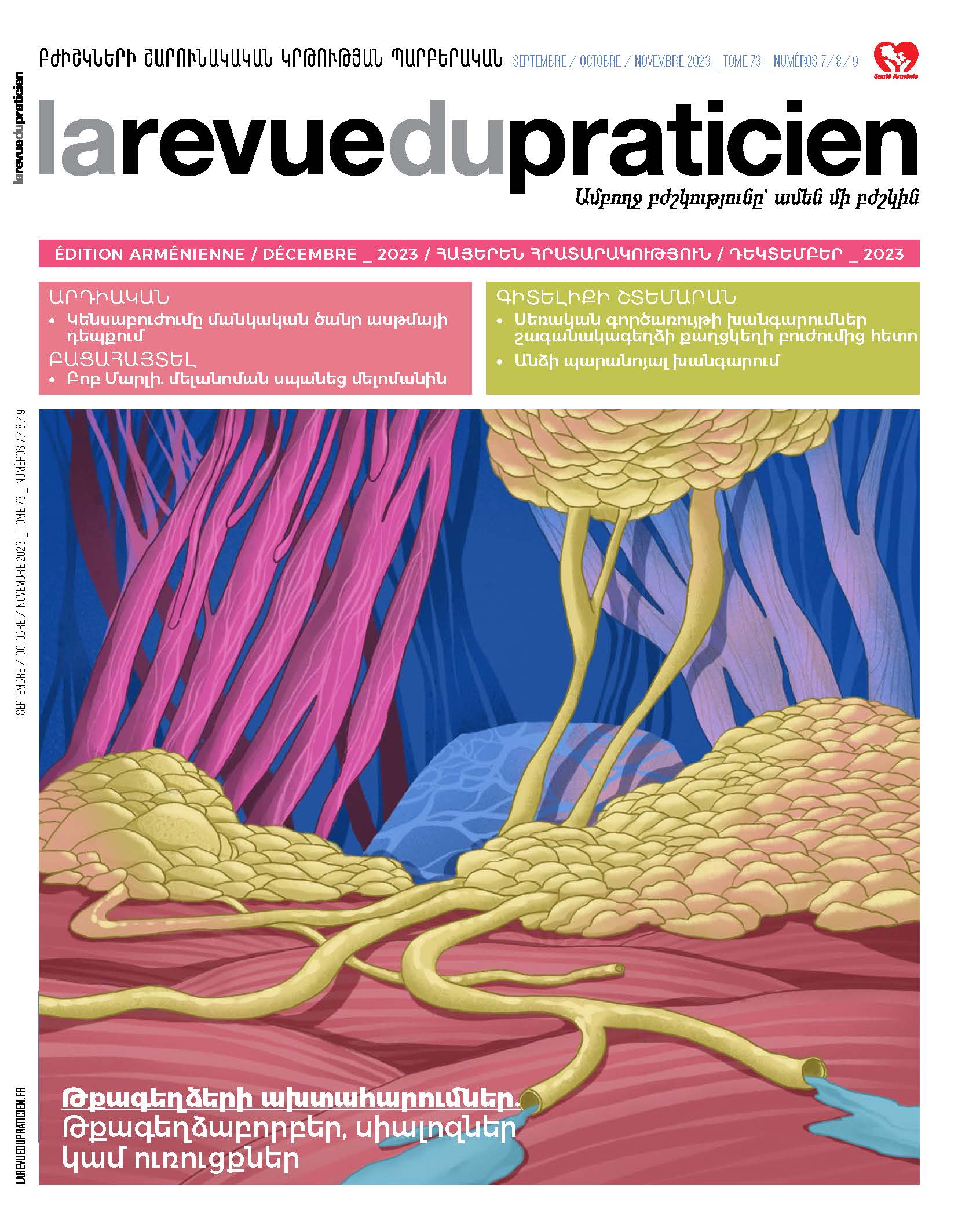Թքագեղձերի ուռուցքներ 29
Florian Chatelet.Ամփոփագիր
Թքագեղձերի ուռուցքները տարատեսակ անատոմիական տեղակայումներով տարասեր խումբ են: Ամենից հաճախ ախտահարվում է հարականջային թքագեղձը, իսկ հյուսվածաբանական տիպն ամենից հաճախ պլեոմորֆ ադենոման է՝ բարորակ ուռուցք՝ կրկնվելու և չարորակ փոխակերպման ներուժով: Թքագեղձերի ուռուցքների մոտ մեկ երրորդը չարորակ է․ կանխատեսումը կախված է ուռուցքի հյուսվածաբանությունից և հյուսվածականխատեսական չափանիշներից: Ախտորոշիչ մոտեցումը կենտրոնանում է այս ախտահարումների բարորակության կամ չարորակության որոշման վրա՝ համապատասխանեցված բուժման ընտրության համար: Այն հիմնված է բազմապարամետրային մագնիսա-ռեզոնանսային շերտագրության (ձևակազմաբանական պատկերները համակցելով դիֆուզիայի և պերֆուզիայի հաջորդականություններով) և նուրբասեղնային բջջապունկցիայի վրա: Գրեթե միշտ ցուցված է վիրահատական միջամտություն՝ հյոսվածաբանական տիպը հաստատելու և հիվանդությունը բուժելու համար: Մասնահատման ծավալը, պարանոցի ավշահանգույցների հեռացումը և հետվիրահատական բուժումը (հետվիրահատական ճառագայթաբուժում) կախված են ուռուցքի հյուսվածաբանական տիպից:
